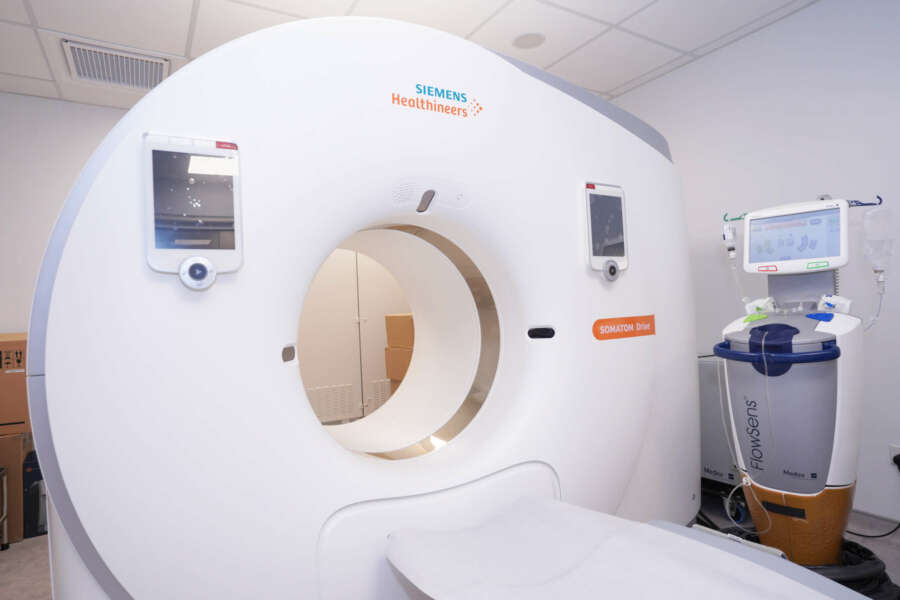
CT Coronary Angiogram
CT Coronary Angiogram scan, a commonly used diagnostic method, is widely performed in Hong Kong. In addition, cardiac CT scanning, which is used to diagnose coronary artery disease, can also be employed for follow-up assessments after cardiac interventions such as coronary artery stenting or bypass surgery. It can provide assistance in other cardiac and cardiovascular evaluations, including congenital anomalies of the coronary arteries, coronary artery fistulas, arterial ducts, aortic dissection, as well as conditions like left atrial thrombus, pulmonary embolism, and aortic aneurysms.
Our center utilizes the Siemens SOMATOM Drive series dual-source CT and the GE 256 Slice Revolution CT ES. These scanners incorporate state-of-the-art technology that enhances accuracy, reduces scanning time, improves safety, and enhances image quality. One notable feature is the ability to minimize artifacts caused by respiratory motion, reducing false images and radiation dose. The cardiac examination can be performed rapidly, typically taking only a few seconds to complete the cardiac CT scan. It enables comprehensive analysis of the cardiac and coronary vascular anatomy, providing precise results and clear images. This makes it suitable for evaluating conditions such as myocardial infarction, coronary artery disease, and aortic abnormalities.
Preventive coronary heart disease examination
With the increasing prevalence of heart disease and a trend towards younger individuals being affected in Hong Kong, there has been a significant rise in the number of people placing greater emphasis on cardiac examinations. Among these examinations, cardiovascular screening is particularly important. Regular cardiac examinations have a preventive effect and are crucial for many individuals to assess the presence of conditions such as coronary artery disease. Coronary artery disease is defined as what? What are the causes of coronary artery disease? What methods are available for preventing coronary artery disease?
Coronary artery disease, also known as coronary heart disease, is a type of heart disease. It occurs when cholesterol builds up on the inner walls of the coronary arteries, leading to narrowing of the artery lumen. This results in a significant reduction in blood supply to the heart muscle. When physical activity is performed, symptoms such as chest pain (angina) may occur. There are various causes of coronary artery disease. Some individuals may have a genetic predisposition to the condition, while others develop it due to unhealthy lifestyle habits. Factors such as obesity, high blood pressure, high cholesterol levels, diabetes, smoking, lack of exercise, and chronic stress can contribute to the development of coronary artery disease. These factors can lead to other health problems, ultimately resulting in the onset of coronary artery disease.
To prevent coronary artery disease, it is important to make appropriate changes in daily life. These include maintaining a balanced diet, avoiding smoking, engaging in regular physical activity, managing weight effectively, maintaining a positive mindset, and practicing relaxation techniques. These lifestyle modifications can significantly reduce the risk of developing coronary artery disease. For individuals with high blood pressure or diabetes, it is essential to receive proper treatment for these conditions, as it can also help in preventing coronary artery disease. Regular cardiac examinations, such as cardiac CT scanning, are also valuable methods for prevention and early management of coronary artery disease. These examinations can provide important insights into the condition of the heart and blood vessels, allowing for timely interventions and appropriate treatment plans.
Coronary Angiography
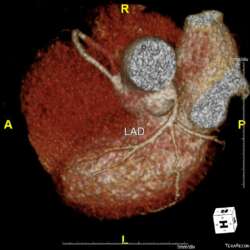
Coronary Angiography
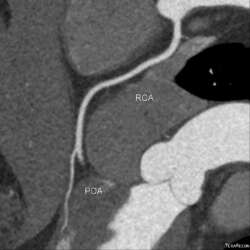
Carotid Artery Stenosis Angiography
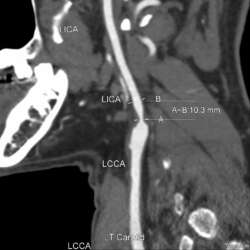
Carotid Artery Stenosis Angiography
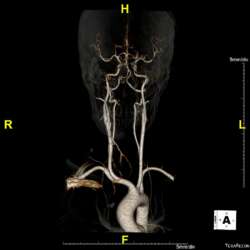
Abdominal Aortic Aneurysm Angiography
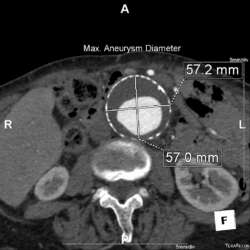
Abdominal Aortic Aneurysm Angiography
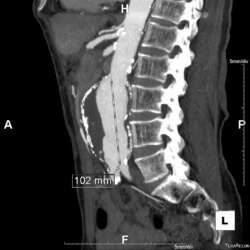
Angiography of anterior descending left coronary artery stenosis
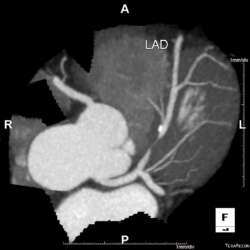
Left coronary artery anterior descending occlusion angiography
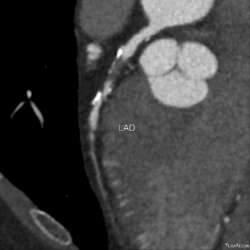
CT Coronary Angiogram scanning allows doctors to perform detailed analysis by observing computer-generated images. It helps in assessing whether there is accumulation of cholesterol, fat, or other substances in the heart and blood vessels, leading to cardiovascular blockages. After conducting a cardiac CT scan, the doctor can identify which arteries are narrowed, the location of the narrowing, the severity of the stenosis, and whether it affects multiple arteries or just one. This information allows for a clear evaluation by the doctor. Additionally, cardiac CT scanning can provide an accurate assessment of the degree of coronary artery stenosis and calculate the structure and extent of plaque calcification. This information is highly valuable in the treatment of heart diseases. It helps doctors determine the appropriate course of action and develop effective treatment plans based on the specific condition of the patient’s coronary arteries.
During CT Coronary Angiogram scanning for the diagnosis of coronary artery disease and cardiovascular evaluation, a contrast agent may be injected into the patient’s body to obtain clear images that accurately reflect the condition of the heart and blood vessels. However, if a patient has an allergic reaction to the contrast agent, such as experiencing severe symptoms like dizziness, vomiting, or developing a rash, the doctor may prescribe corticosteroids or other antiallergic medications to mitigate the allergic response caused by the contrast agent. In another scenario, if a patient has an elevated heart rate, the doctor may prescribe medication before the cardiac CT scan. This helps stabilize the heart rate (typically around 60 beats per minute) during the scan, ensuring clearer imaging results. These measures are taken to ensure patient safety and obtain high-quality images for accurate diagnosis and evaluation during cardiac CT scanning.
Before undergoing a CT Coronary Angiogram scan, healthcare professionals collect relevant medical history and explain the purpose of the examination and any precautions. Then, a small catheter is placed in the patient’s forearm, allowing the radiology technician to inject the contrast agent into the patient’s body through the catheter. The cardiac CT scanner then displays the condition of the patient’s heart and blood vessels. During the injection, the patient may experience a warm sensation in the chest, which is a normal reaction. Generally, this warmth subsides after a short while.
- If the patient has a history of contrast agent allergies, asthma, diabetes, or any other relevant heart surgery or medical conditions, it is important to inform the healthcare professionals.
- Doctors may prescribe medication to slow down the patient’s heart rate, which can enhance the quality of cardiac CT scan images and reduce radiation dosage.
- If you are already pregnant, suspect that you might be pregnant, or currently breastfeeding, please inform the healthcare professionals at our center.
- If you have any questions, please consult with the healthcare professionals at our center before the examination.

